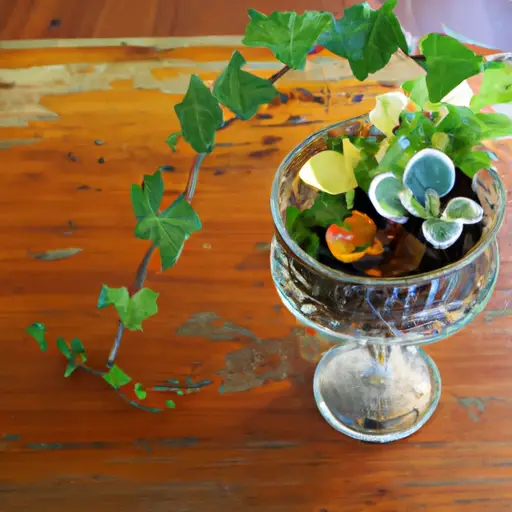Bringing Nature Indoors: Creating Stunning Indoor Container Gardens
In today’s fast-paced world, finding moments of tranquility and peace in the midst of our busy lives has become increasingly important. One way to achieve this is by bringing nature indoors through the creation of stunning indoor container gardens. These miniature green spaces not only add beauty to our homes but also have numerous health benefits. In this article, we will explore the art of creating indoor container gardens and provide you with tips and ideas to help you create your own personal oasis.
First and foremost, let’s discuss the many advantages of having indoor container gardens. The most obvious benefit is the aesthetic appeal they add to our living spaces. Whether you live in a spacious home or a tiny apartment, these gardens can be tailored to fit any size or style. With a wide variety of plants available, you can create an indoor garden that complements your existing décor or becomes a focal point in its own right.
Aside from their visual appeal, indoor container gardens also offer several health benefits. Plants are natural air purifiers, removing toxins from the air and releasing fresh oxygen into our environment. They also help to humidify the air, which can be particularly beneficial during dry winter months when indoor heating systems tend to dehydrate us. Studies have shown that being surrounded by plants can reduce stress levels and improve mood, making them an ideal addition to any home or office setting.
Now that we understand the importance of indoor container gardens let’s discuss how to create them effectively. First things first – choose the right plants for your space. Consider factors such as lighting conditions, temperature, and humidity levels when selecting your plants. Some popular choices for low-light conditions are snake plants (Sansevieria), pothos (Epipremnum aureum), and ZZ plants (Zamioculcas zamiifolia). For bright areas with direct sunlight, succulents like jade plants (Crassula ovata) and echeverias thrive. Research the specific needs of each plant before making your final selection.
Once you have chosen your plants, it’s time to select the appropriate containers. The possibilities here are endless – from traditional clay pots to modern geometric terrariums, there is something to suit every style and preference. Ensure that your containers have proper drainage holes or choose containers that come with a dish to catch excess water. This will prevent waterlogging and root rot, which can be detrimental to your plants’ health.
When it comes to soil, using a high-quality potting mix is essential for the success of your indoor container garden. This type of soil is specifically formulated for indoor plants and provides the necessary nutrients and drainage they need. Avoid using garden soil as it tends to be too heavy and may contain pests or diseases that could harm your plants.
Now that you have all the necessary supplies, it’s time to arrange your indoor container garden. Consider the height and growth habits of each plant when deciding on their placement within the container. Place taller plants at the back or center of the arrangement, with shorter ones towards the front or edges. This will create a visually appealing composition that allows each plant to shine.
Don’t be afraid to get creative with accessories like rocks, pebbles, or decorative elements like small figurines or fairy lights. These can add a whimsical touch or help create a specific theme for your indoor garden.
Maintaining an indoor container garden requires some basic care. Regular watering is crucial, but be careful not to overwater as this can lead to root rot. Before watering, check if the top inch of soil feels dry – if it does, it’s time to water your plants thoroughly until excess water drains through the bottom of the container.
Regular fertilizing is also important as potted plants tend to deplete nutrients faster than those in outdoor gardens. Use a balanced, water-soluble fertilizer once a month during the growing season to keep your plants healthy and vibrant.
Lastly, keep an eye out for pests or diseases that may affect your indoor garden. Inspect your plants regularly for any signs of infestation or illness and take prompt action to address the issue. Common pests include aphids, mealybugs, and spider mites. If you notice any problems, use organic insecticides or natural remedies to treat them without harming your plants or the environment.
Creating stunning indoor container gardens allows us to bring a piece of nature into our everyday lives, promoting a sense of peace and wellbeing. From choosing the right plants and containers to arranging them in an appealing composition and providing proper care, creating an indoor garden is a rewarding endeavor. So go ahead and unleash your creativity – let nature thrive indoors!













